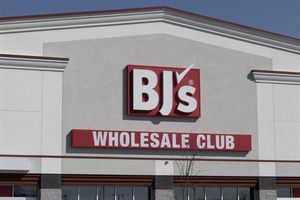
November 24, 2025 – As the broader agricultural economy grapples with the persistent pressure of low commodity prices, particularly impacting grain farmers, the dairy and beef sectors are shining as unexpected bright spots. These vital segments of the livestock industry are not only demonstrating remarkable resilience but are also playing a crucial role in stabilizing the overall agricultural landscape, offering a counter-narrative to the prevailing economic anxieties.
This unexpected strength in dairy and beef is largely attributed to a confluence of factors: robust and sustained consumer demand, unique supply-side dynamics in the beef market, and strategic investments coupled with efficiency gains within the dairy industry. While grain producers face tightening margins, livestock farmers in these sectors are benefiting from more favorable conditions, including lower feed costs, which are directly translating into improved profitability and a much-needed boost for farm finances.
Unpacking the Resilience: High Prices and Strategic Growth Define the Moment
The current strength in the beef and dairy sectors is a story of contrasting yet complementary forces. In the beef market, the narrative is dominated by record-high prices driven by a significantly constrained supply. As of late 2025, the U.S. cattle sector is operating with its smallest national herd in decades, a level not seen since 1951, marking the sixth consecutive year of contraction. This has led to a projected decline in U.S. beef production of approximately 2% in 2025, with prime cattle slaughter expected to see a 4% reduction compared to 2024 levels. Consequently, fed steer prices are projected to average a robust $201 per hundredweight (cwt) in 2025, with GB all-prime deadweight cattle prices hitting an impressive 702p/kg earlier in the year. Despite these elevated prices, which can approach $10/lb for steak, consumer demand has remained remarkably resilient, with many consumers adapting by opting for cheaper cuts or increasing at-home consumption rather than abandoning beef altogether. This imbalance has prompted the U.S. to increase beef imports to supplement reduced domestic production.
The dairy sector, while exhibiting a more nuanced picture, is also largely positive and outperforming initial expectations. The U.S. dairy herd size saw an increase of 57,000 head year-on-year by March 2025, signaling growth. This expansion is being met with substantial strategic investments, with over $8 billion committed to developing new dairy processing facilities, primarily focused on cheese production. This expanded capacity is increasing demand for raw milk and reflects a broader industry optimism; approximately 80% of dairy industry executives anticipate volume growth greater than 3% over the next three years. This optimism is fueled by a resurgence in consumer demand for a diverse range of dairy products, from traditional butter and cheese to functional dairy options like high-protein yogurts. Crucially, both sectors are benefiting from the low commodity prices plaguing grain farmers, as these translate directly into more favorable feed costs, enhancing profitability margins for livestock producers.
Market Movers: Who Wins and Who Faces Headwinds
The current dynamics in the dairy and beef markets create a clear distinction between potential winners and those facing significant challenges.
Beef Sector: The tight supply and soaring cattle prices are a boon for cattle producers. Companies like Cresud S.A.C.I.F. y A. (NASDAQ: CRESY), an Argentinian agricultural company with substantial cattle operations, are positioned to benefit from the higher prices fetched for their livestock. However, this environment presents significant headwinds for major beef processors. Giants such as Tyson Foods, Inc. (NYSE: TSN), JBS S.A. (OTC: JBSAY / B3: JBSS3), and Marfrig Global Foods S.A. (OTC: MRRTY / B3: MRFG3) face considerable pressure on their profit margins. These companies must pay more for their raw material (cattle), which can squeeze earnings, as evidenced by Tyson's reported losses in its beef business and the closure of some processing plants. Even diversified food companies like Hormel Foods Corporation (NYSE: HRL), with significant packaged meat product lines, will likely see increased input costs for their beef-related offerings, potentially impacting profitability in those segments.
Dairy Sector: The resilient demand, increasing herd sizes, and significant investments in processing capacity paint a more favorable picture for dairy processors and product manufacturers. Companies like Saputo Inc. (TSX: SAP), a leading global dairy processor, are well-positioned to capitalize on these trends. Similarly, diversified food conglomerates with strong dairy portfolios, such as The Kraft Heinz Company (NASDAQ: KHC), Nestlé S.A. (SIX: NESN), and Danone S.A. (EPA: BN), stand to benefit from sustained consumer interest and a more robust supply chain. Specialty dairy manufacturers like Lifeway Foods, Inc. (NASDAQ: LWAY), known for kefir and farmer cheese, are also likely to thrive as consumers seek out specific and often health-oriented dairy options. The overall investment in new processing facilities signals confidence and an ability to meet growing demand efficiently, which is a positive for these players.
Broader Implications: A Stabilizing Force in a Shifting Landscape
The current strength of the dairy and beef sectors is not an isolated phenomenon but rather a critical component of broader agricultural trends, serving as a vital stabilizing force. In a period where grain farmers are contending with significantly depressed prices, the profitability in livestock acts as a crucial counterbalance, preventing a more severe economic downturn across the entire agricultural landscape. This dynamic highlights the interconnectedness of agricultural markets, where one sector's challenge (low grain prices) becomes an advantage (lower feed costs) for another.
Globally, the demand for animal protein and dairy products continues its upward trajectory, particularly in middle-income countries driven by rising incomes and urbanization. This sustained global appetite underpins the long-term outlook for both beef and dairy. In the beef sector, the slow pace of herd rebuilding—not expected to begin meaningfully until 2026 or beyond—will likely keep prices elevated for the foreseeable future, perpetuating the current supply-demand imbalance. This situation could attract regulatory scrutiny regarding market concentration in meatpacking, given the dominance of a few large players. For dairy, the substantial investments in processing capacity, particularly for cheese, signify a strategic pivot towards higher-value products and a confidence in expanding market share. This focus on efficiency and value-added products, coupled with innovation in functional dairy, positions the sector for sustained growth. Historically, periods of tight livestock supply have often led to extended periods of high prices, a pattern that appears to be repeating in the current beef market.
What Comes Next: Navigating Opportunities and Challenges
Looking ahead, the dairy and beef sectors are poised for continued evolution, presenting both opportunities and challenges. In the short term, the beef market will likely continue to be characterized by tight supplies and elevated prices. Herd rebuilding efforts will be slow, dependent on favorable weather conditions and producer confidence, pushing any significant increase in supply well into 2026 or even 2027. This sustained scarcity will likely maintain profitability for cattle producers while continuing to challenge meatpackers to manage input costs effectively.
For the dairy sector, the outlook remains positive, driven by sustained consumer demand and the ongoing benefits of significant processing investments. We can expect continued innovation in dairy products, with a focus on functional benefits, sustainability, and diverse product offerings to meet evolving consumer preferences. Automation, AI-powered monitoring, and data analytics are becoming increasingly prevalent across both sectors, driving efficiency, improving animal welfare, and enhancing sustainability. These technological adoptions will be critical for managing costs and optimizing production in the long term. Strategic pivots, such as diversification into direct-to-consumer sales for beef producers or a focus on milk quality (butterfat and protein) for dairy farmers, will become increasingly important for mitigating risks and capturing new market opportunities. Potential scenarios include further consolidation among processors to achieve economies of scale, or conversely, a rise in niche markets catering to specific consumer demands for locally sourced or specialty products.
Comprehensive Wrap-Up: Stability in a Volatile World
In summary, the dairy and beef sectors stand as crucial anchors in the agricultural economy as of late 2025. Their current strength, characterized by record-high beef prices due to tight supply and robust, strategically growing dairy markets, provides a much-needed counterbalance to the challenges faced by grain farmers. This resilience underscores the dynamic and often cyclical nature of agricultural markets, where economic pressures in one area can create opportunities in another.
Moving forward, the market will likely see continued strength in these livestock sectors, driven by global protein demand and ongoing efficiency improvements. For investors, monitoring supply-demand dynamics in cattle, the pace of dairy processing capacity expansion, global trade policies impacting agricultural exports and imports, and evolving consumer spending habits will be paramount. The ability of these sectors to adapt to changing environmental conditions, technological advancements, and consumer preferences will ultimately determine their lasting impact and continued role as bright spots in the agricultural landscape.
This content is intended for informational purposes only and is not financial advice






